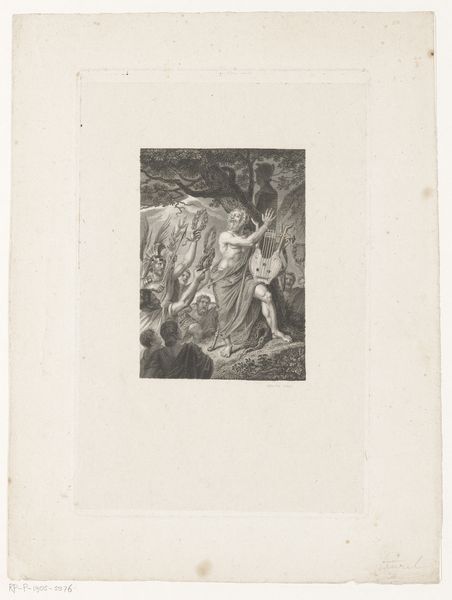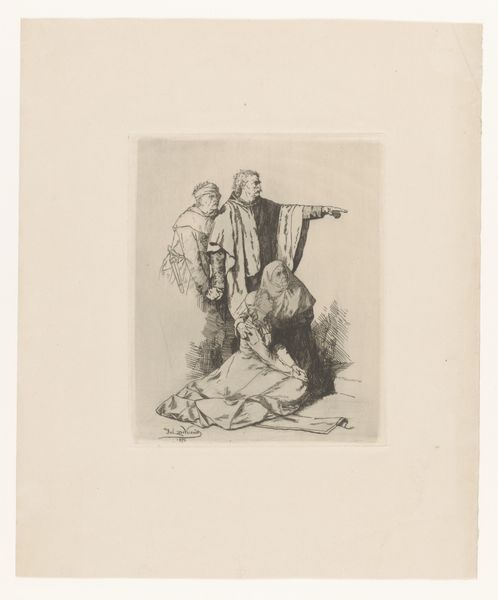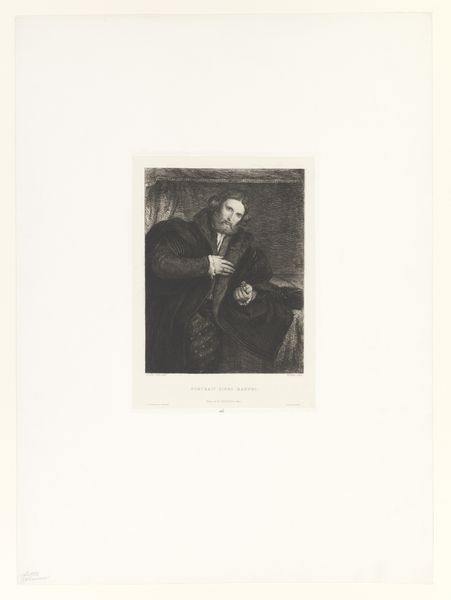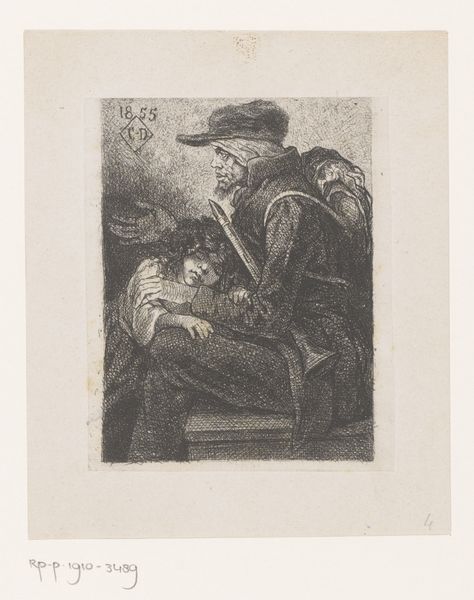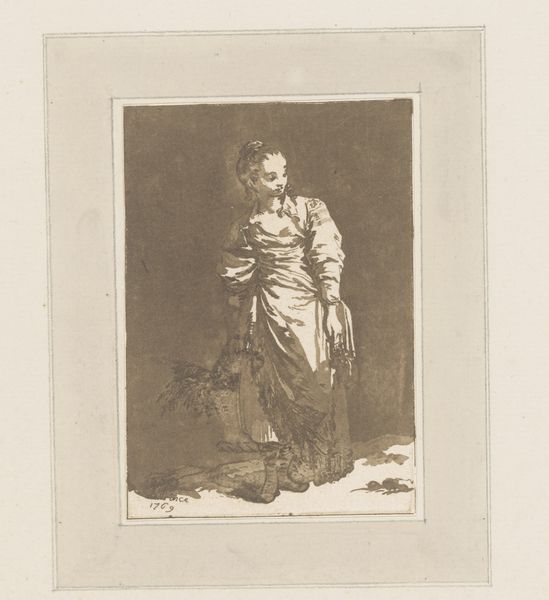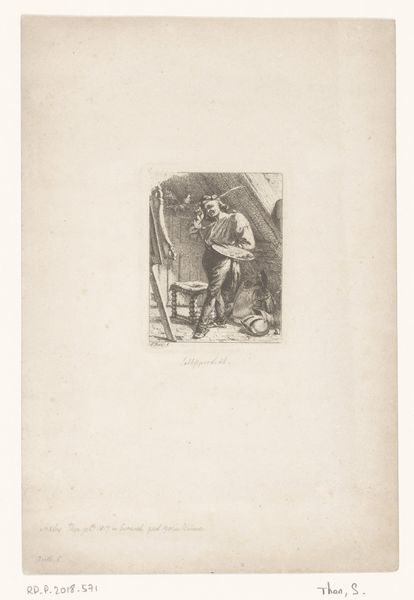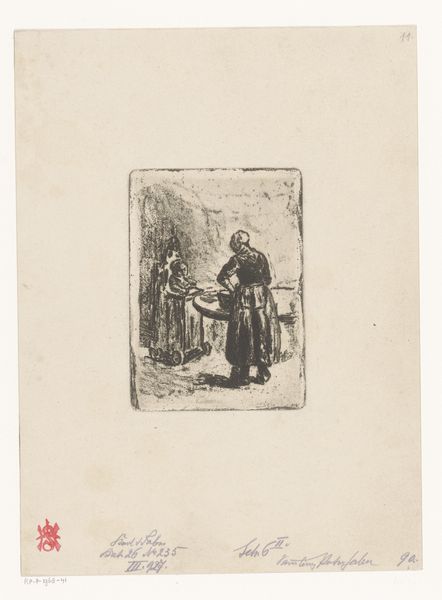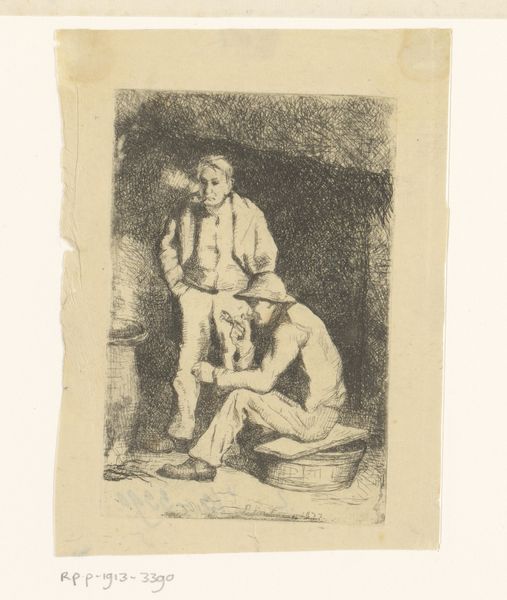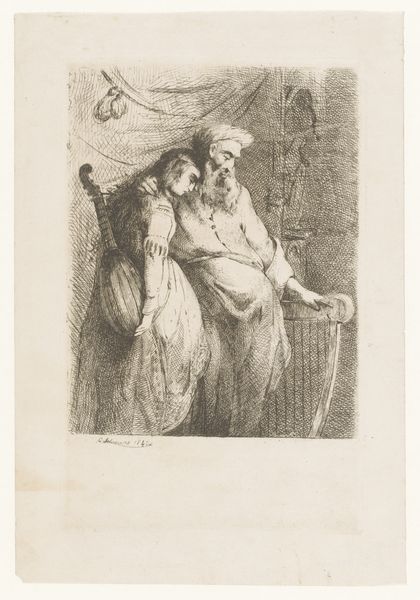
print, etching
#
portrait
#
narrative-art
# print
#
etching
#
figuration
Dimensions: height 246 mm, width 160 mm
Copyright: Rijks Museum: Open Domain
Curator: What strikes me most is the clear somber mood – the subdued tones, the way the figures are positioned. There's a gravity in the image. Editor: Absolutely. Here we have an 1876 etching by Albrecht de Vriendt entitled "Man Standing by the old Charles V Seated in an Armchair," housed right here at the Rijksmuseum. De Vriendt really captures a sense of quiet reflection. The medium of etching seems perfectly suited to the intimacy of the scene. Curator: The iconography of an old ruler and his attendant implies not just a portrait, but a moment laden with significance. Old age, mortality... perhaps even the passing of an era. The man standing possesses such youthful energy by comparison. Editor: Exactly! The posture of the younger man speaks volumes about duty, and about generational transition in seats of power. One sees the historical context immediately: an aging ruler, nearing his twilight, a younger subject in his service and ambit. Curator: Charles V’s stance appears dejected. But, consider his attire: formal robes still worn despite the chair denoting relaxation. He has not yet discarded all the trappings of office. Symbols linger even as physical strength wanes. Editor: I wonder what narrative the artist intended. Was it meant to offer subtle commentary about the state of leadership, perhaps the burden and loneliness that go with wielding absolute power? Given the date of its creation, one could see this as speaking directly to contemporary political anxieties in post-monarchical Europe. Curator: That reading resonates. Yet beyond direct political readings, perhaps it expresses something timeless – universal human anxieties regarding aging, authority, and legacy as a type of cultural memory that haunts both ruler and ruled. The man is leaning, listening, in his role of the court, it is he who hears. Editor: It truly bridges a sense of specificity within its historical setting while engaging in questions surrounding time itself, questions about power, duty, and the changing dynamics of those power relations. Curator: Seeing how you’ve highlighted its reflection on mortality alongside generational shifts, I feel my original sense of solemnity deepening into a recognition of cyclical patterns. How human nature endures, adapting the roles even as actors change. Editor: I agree. I began by focusing more on political implications, but that attention to cycles broadens my own view, underscoring the ways anxieties surrounding leadership transcend specific historical moments.
Comments
No comments
Be the first to comment and join the conversation on the ultimate creative platform.
